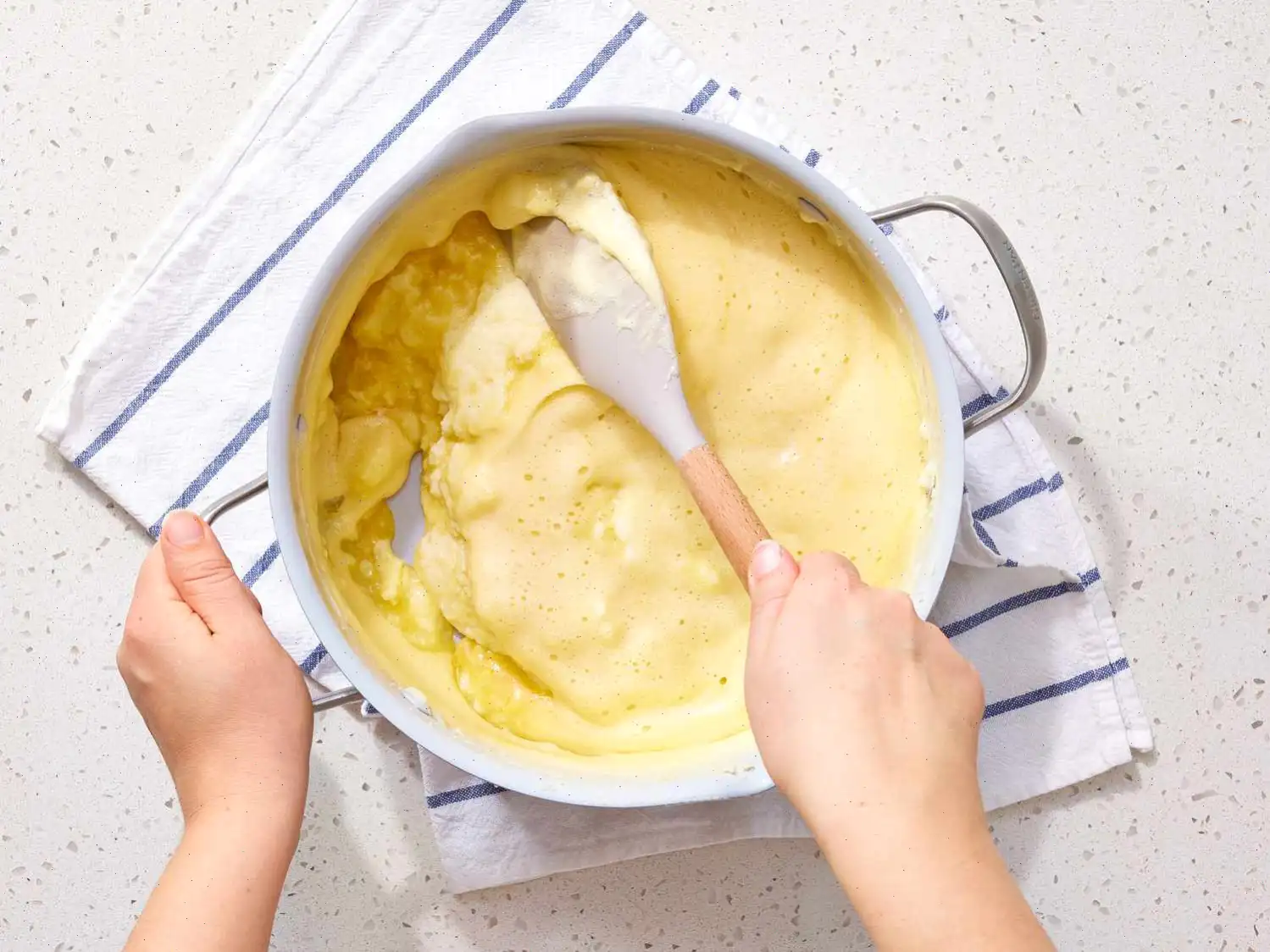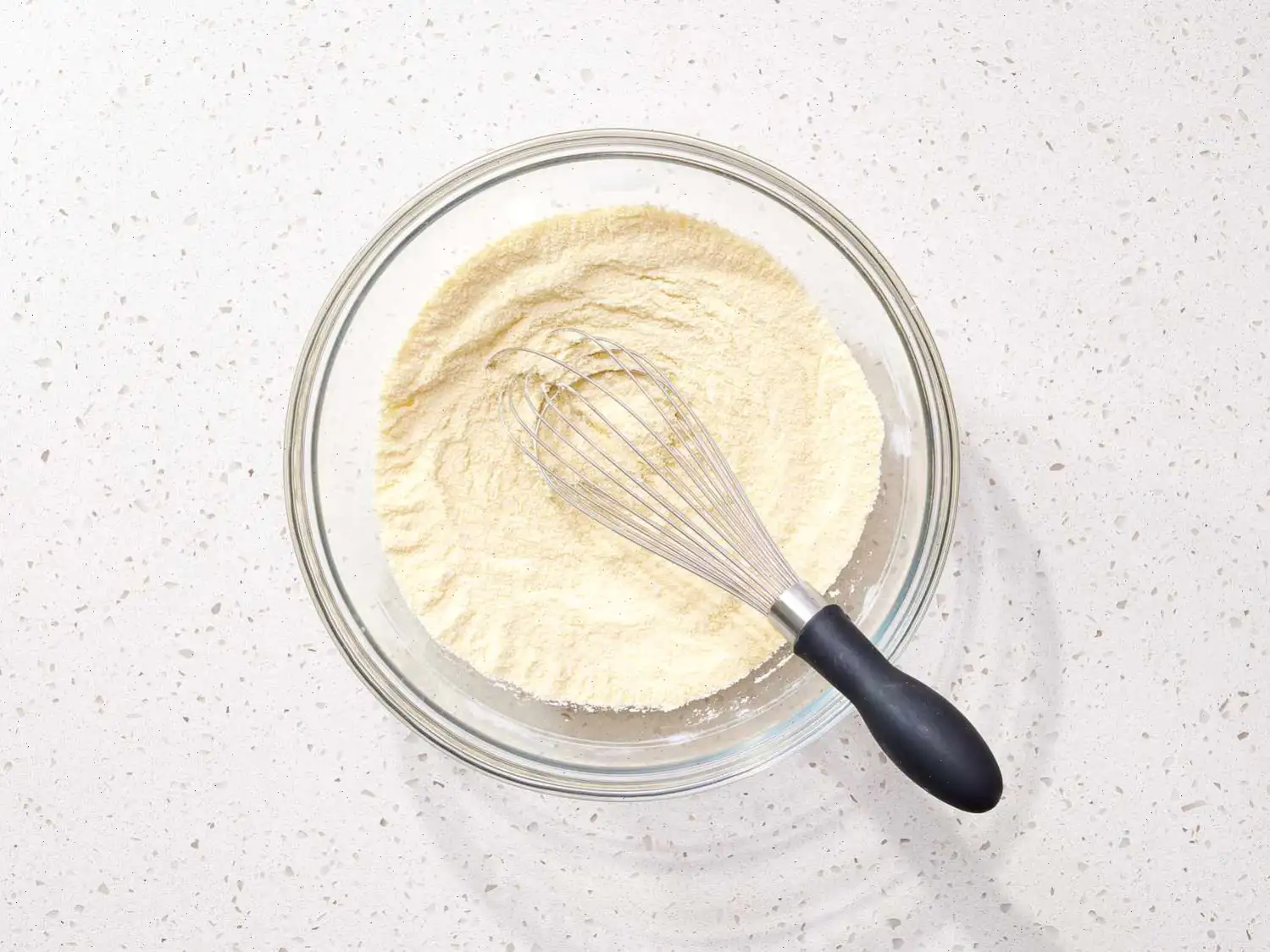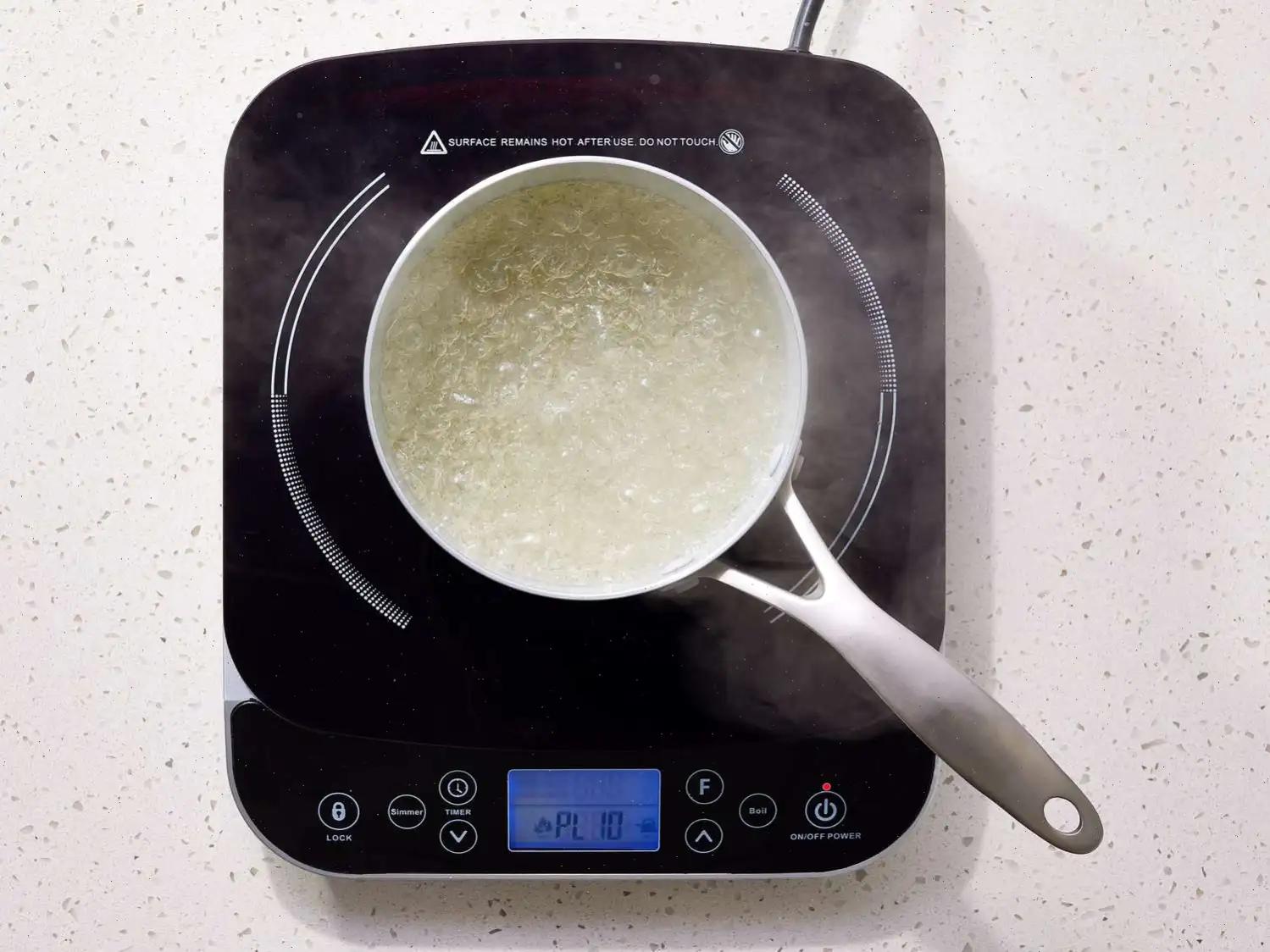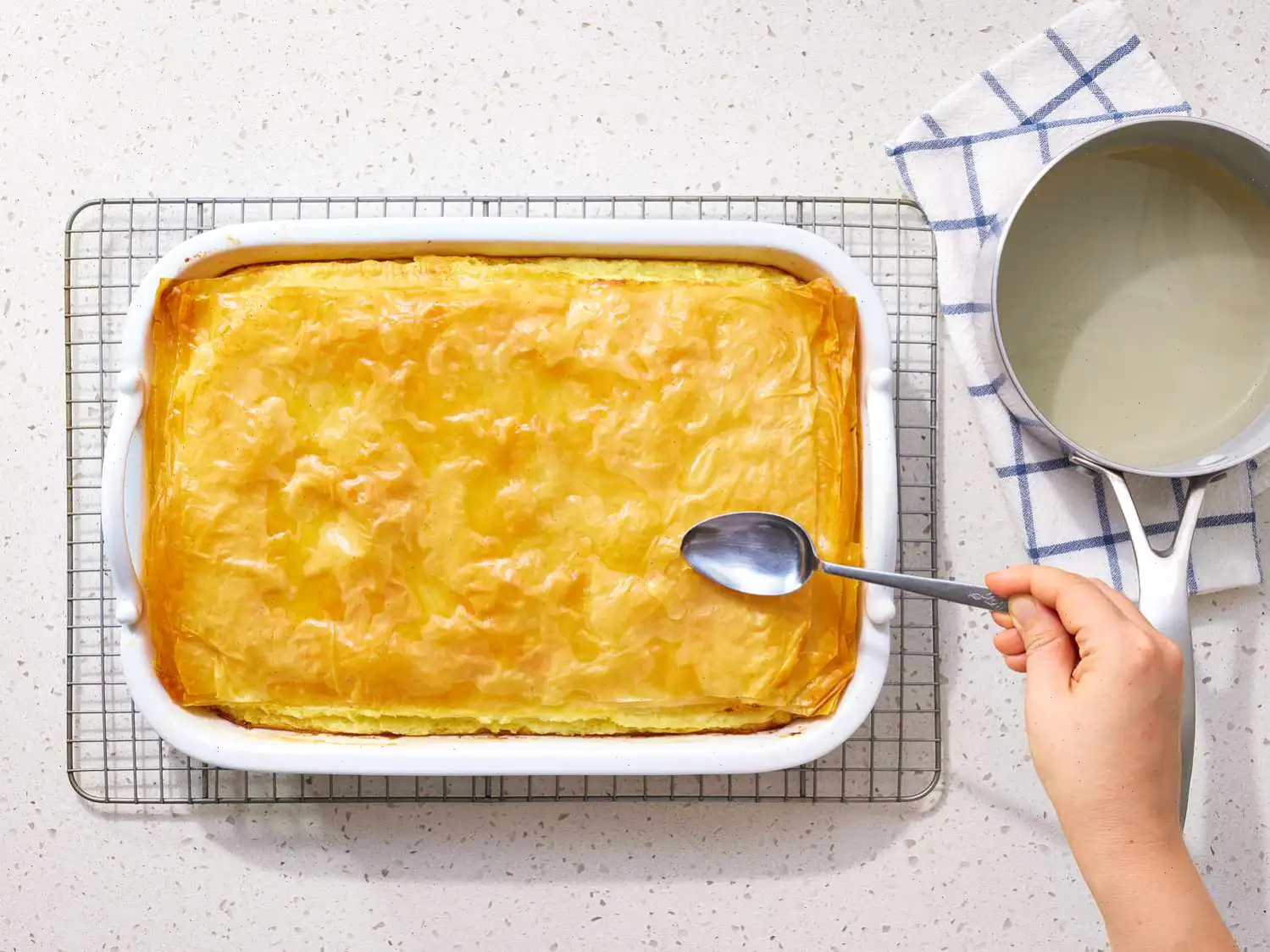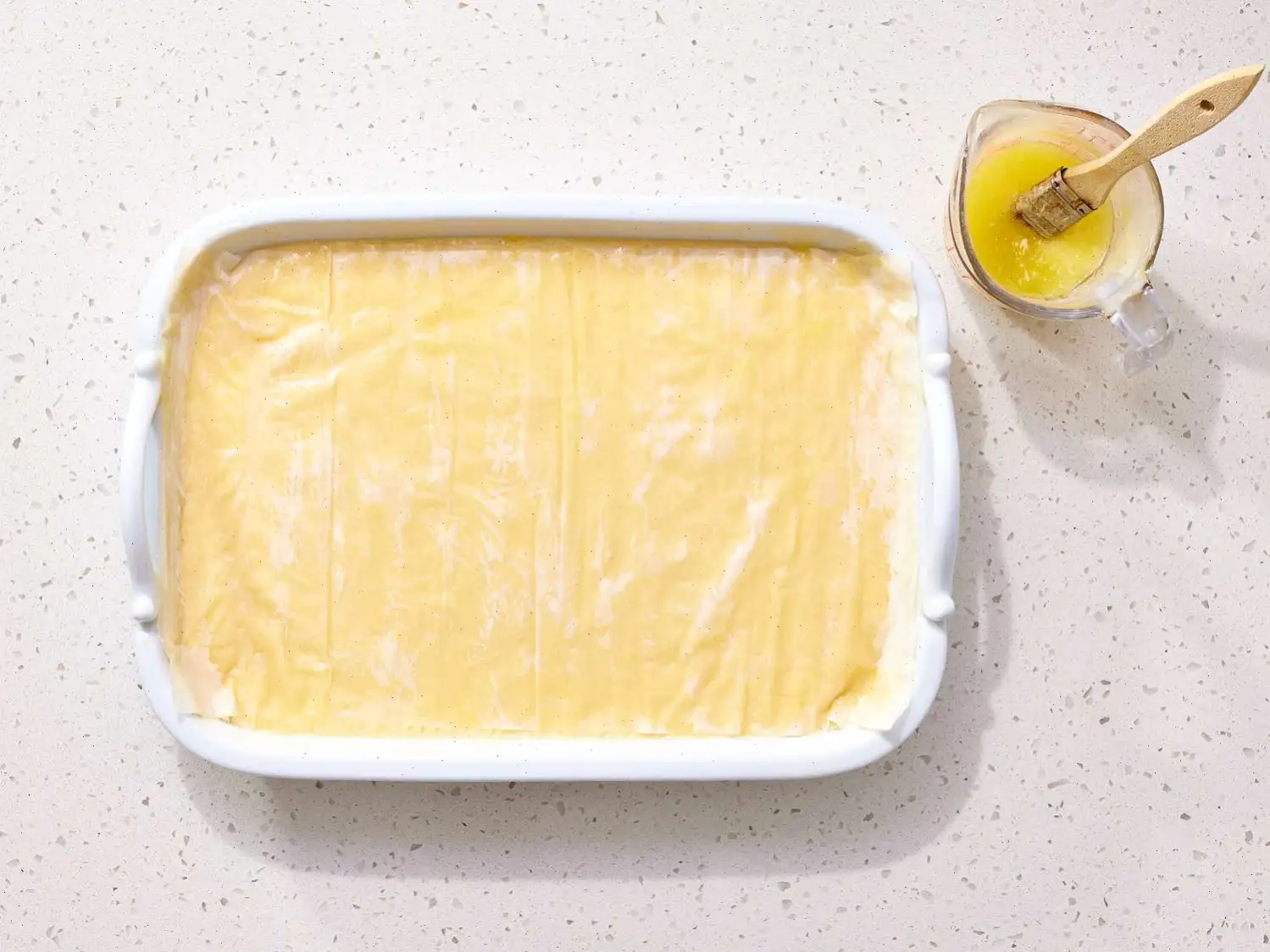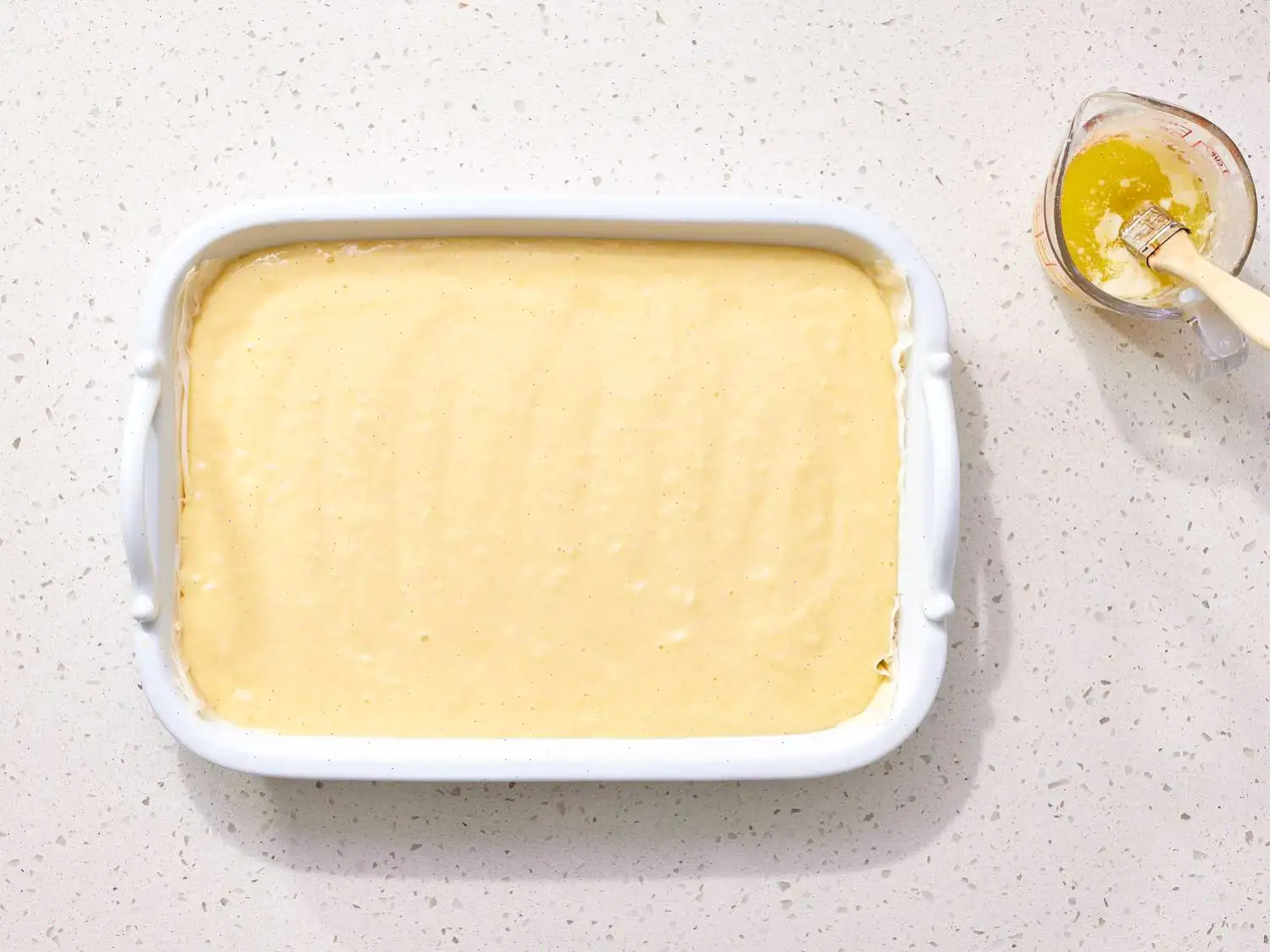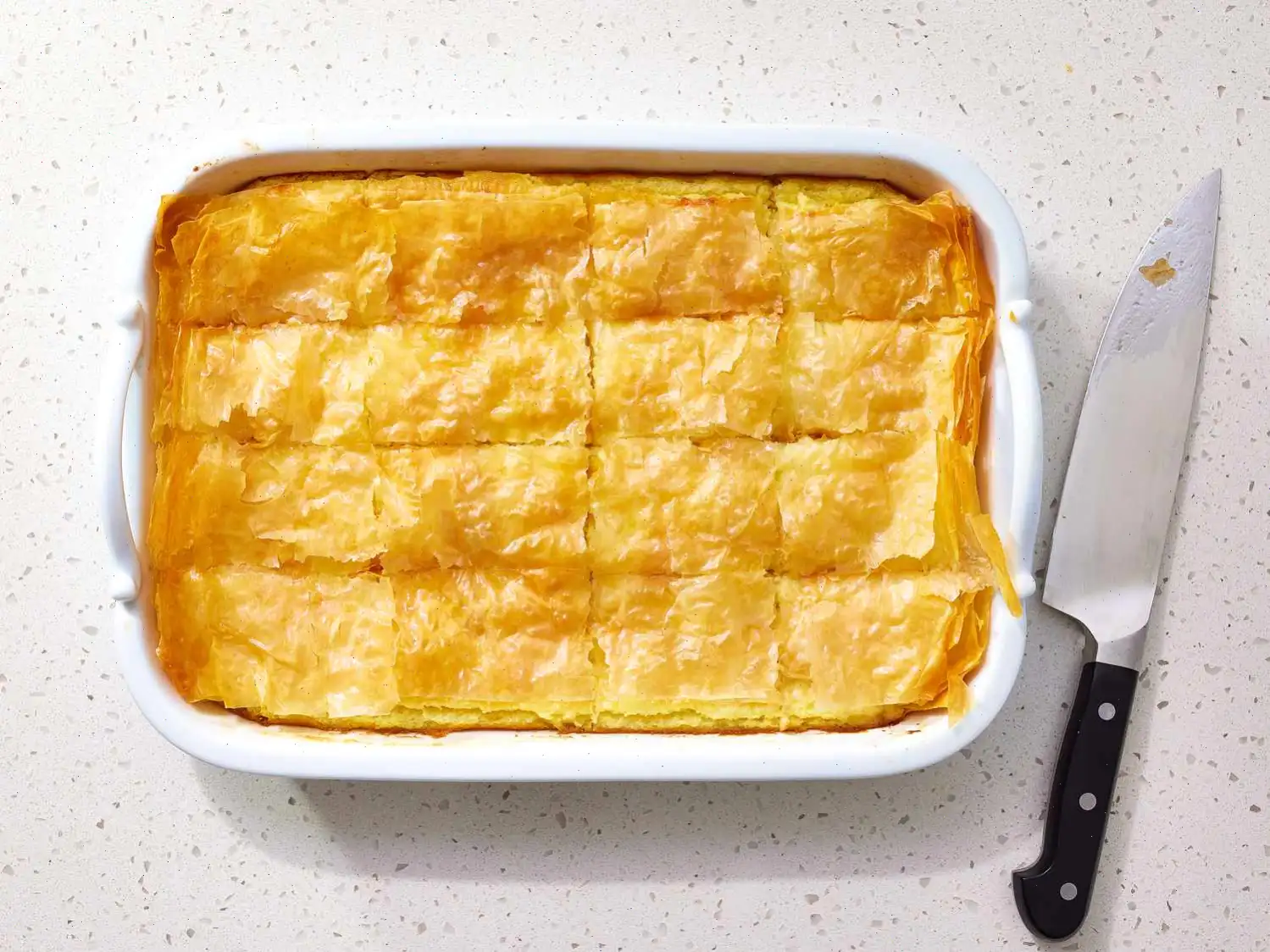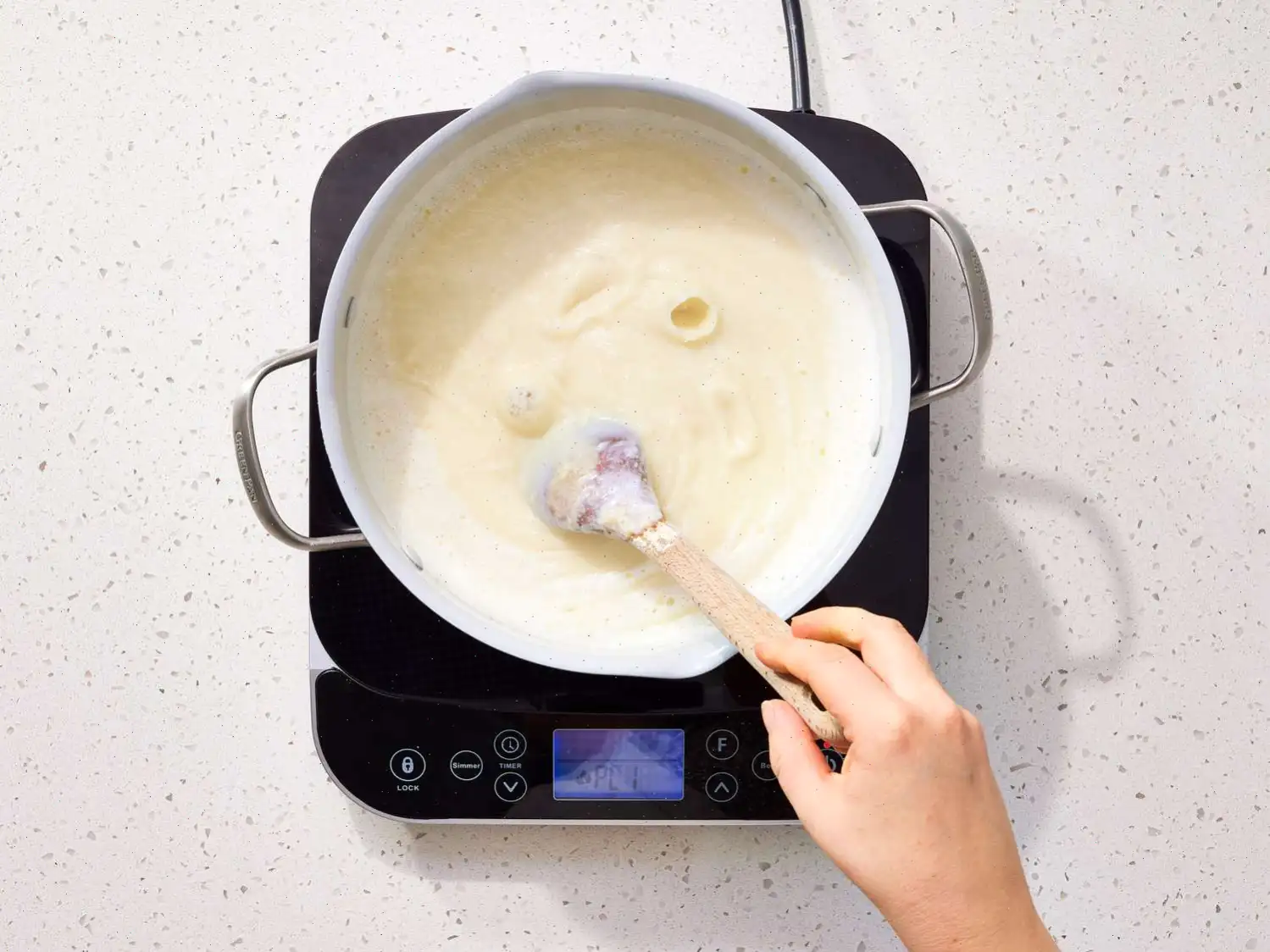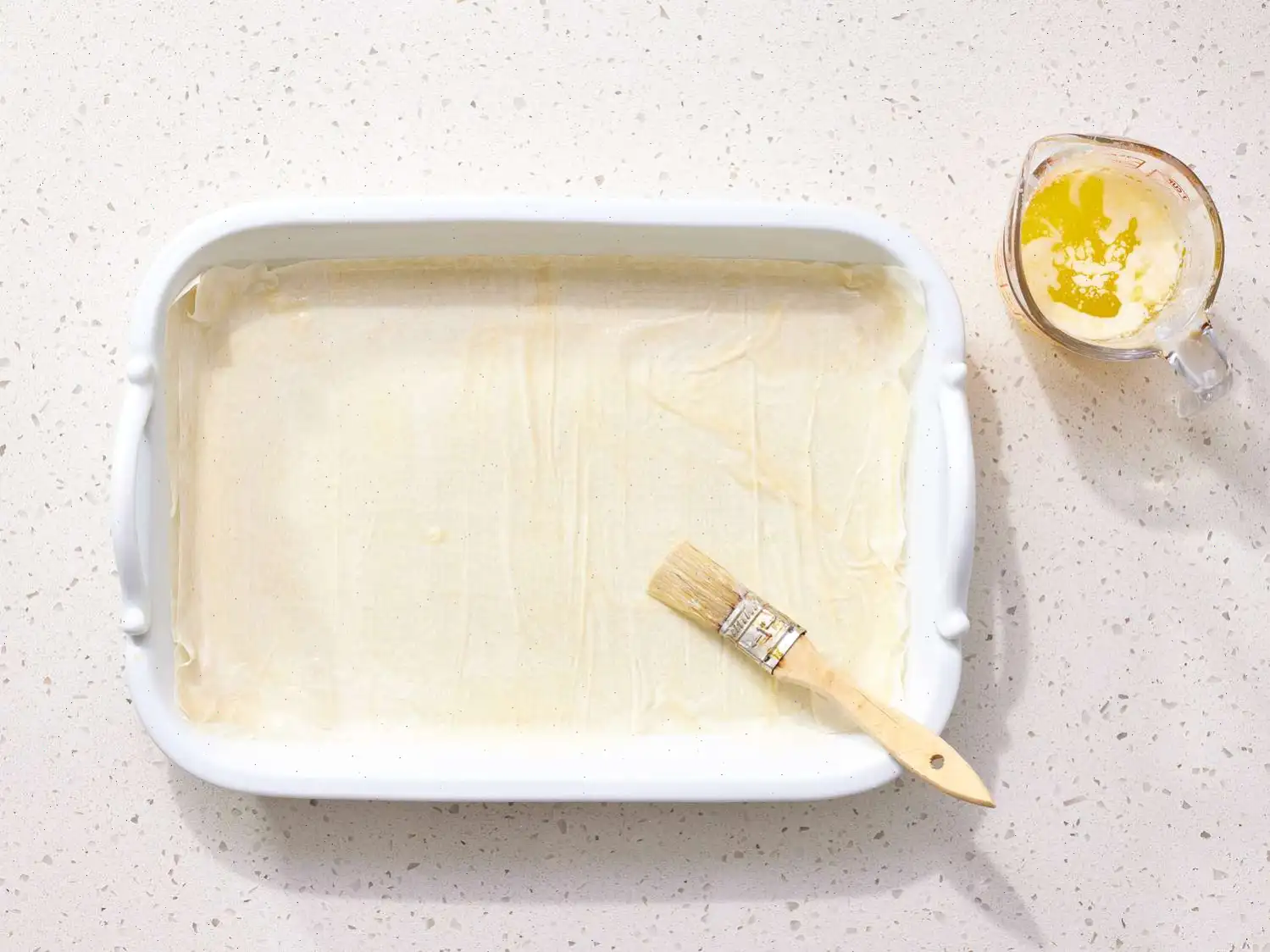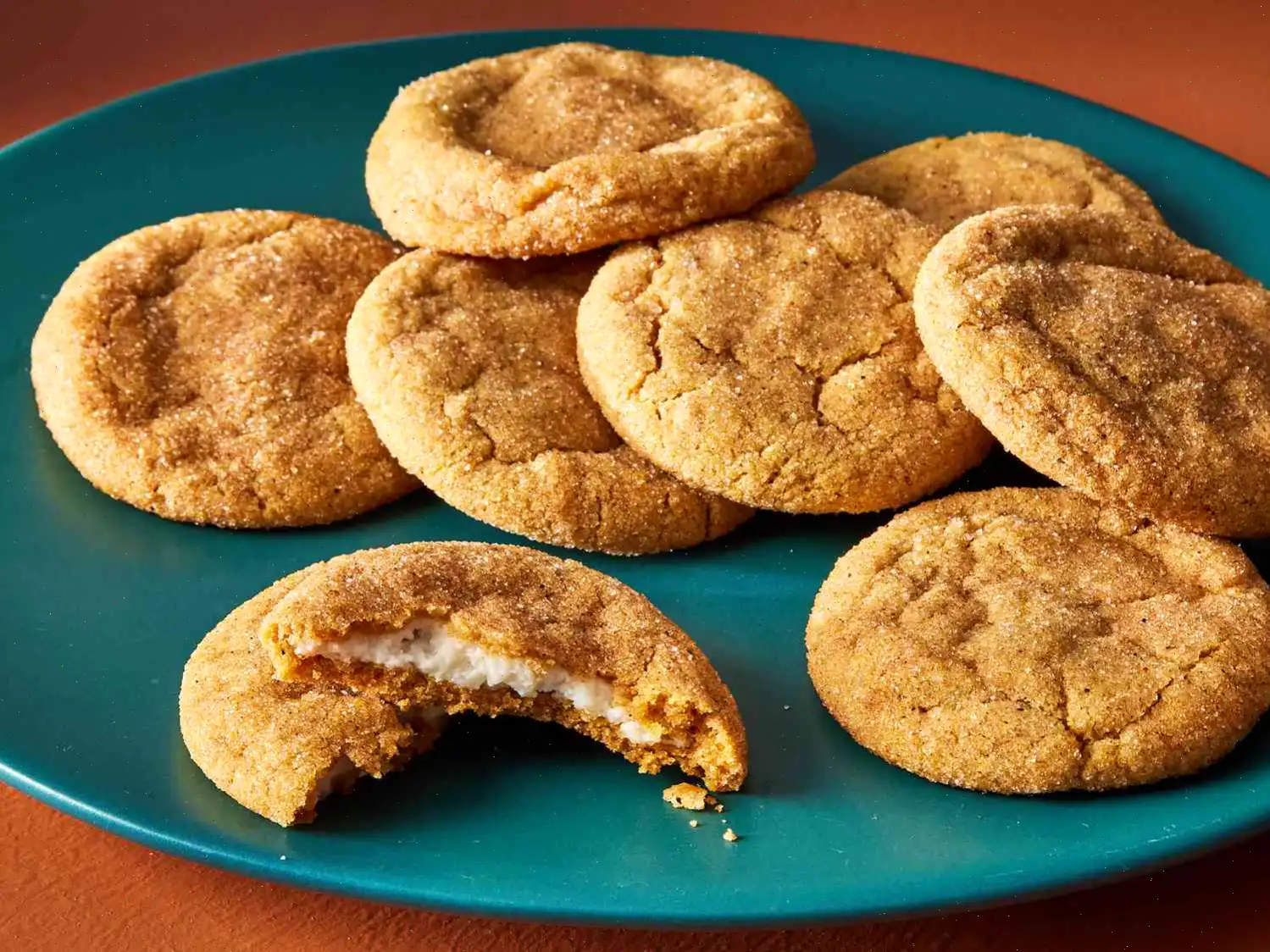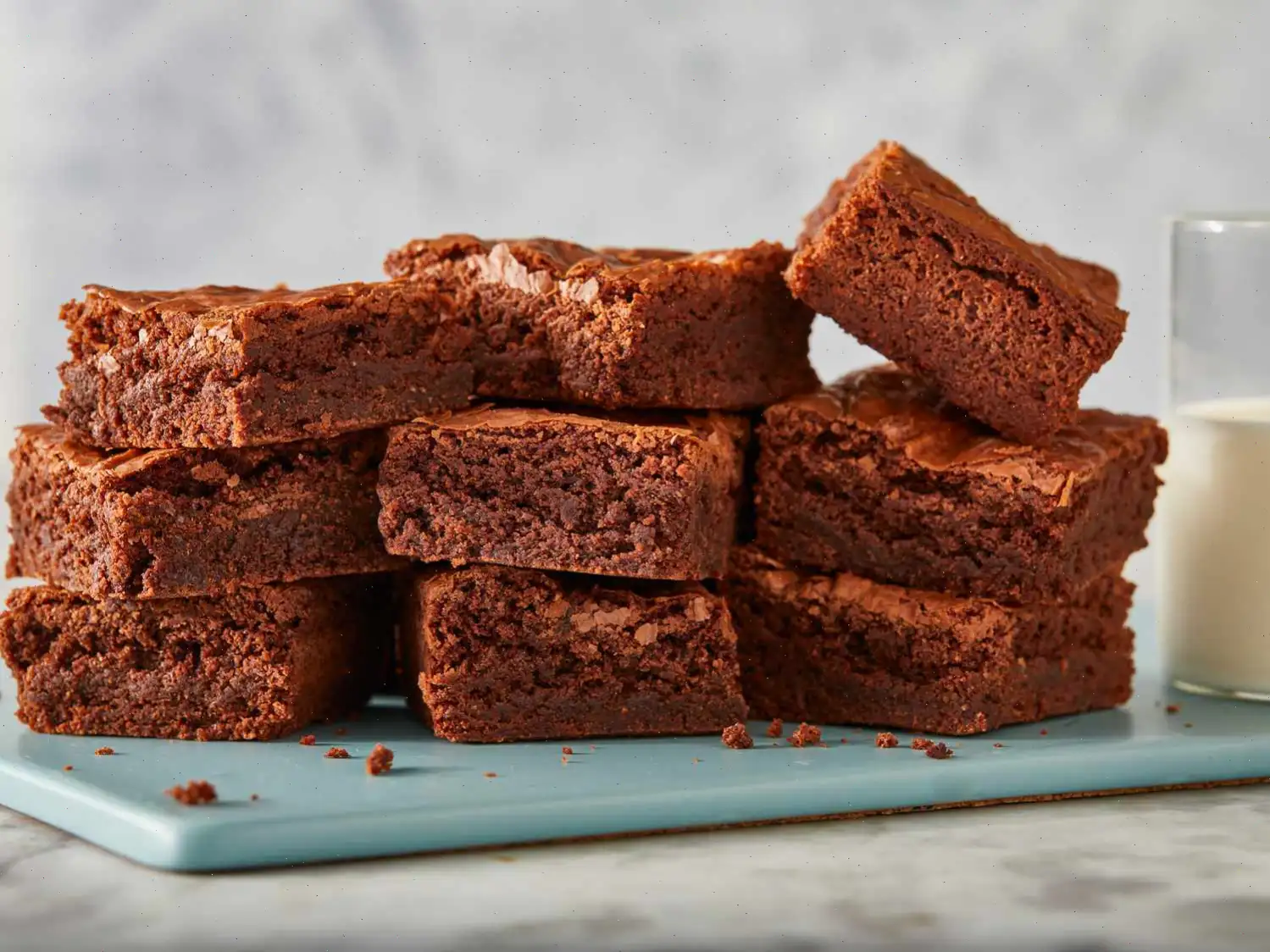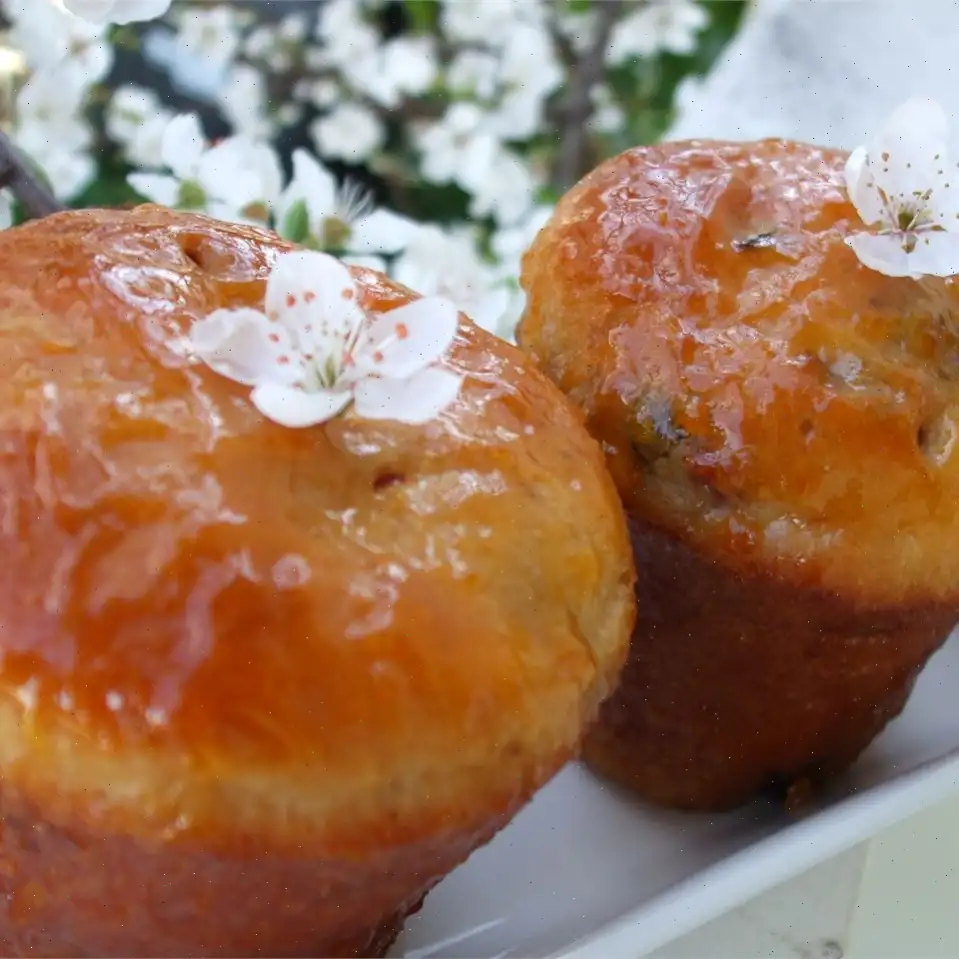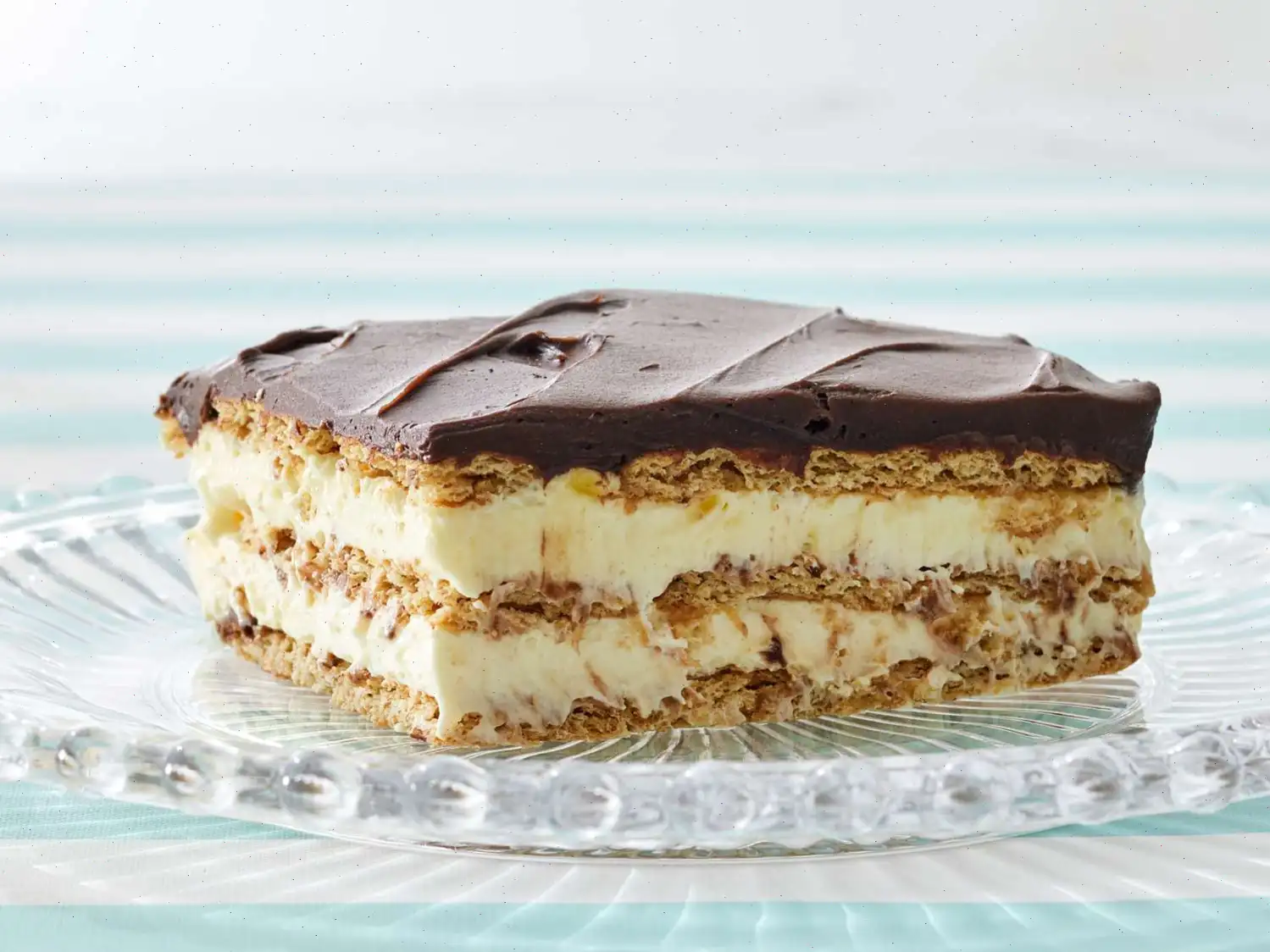
Galaktoboureko Recipe
Ingredients:
- 2 cups white sugar, divided
- 1 cup semolina flour
- 3 tablespoons cornstarch
- teaspoon salt
- 6 cups whole milk
- 6 large eggs
- 1 teaspoon vanilla extract
- cup butter, melted
- 12 sheets phyllo dough
- 1 cup water
Directions:
- Start by gathering all the ingredients on your countertop for easy access.
- In a medium-sized bowl, whisk together 1 cup of sugar, semolina flour, cornstarch, and salt until no lumps remain from the cornstarch.
- Pour the milk into a large saucepan and bring it to a boil over medium heat.
- Slowly add the semolina mixture into the boiling milk while stirring constantly with a wooden spoon. Continue stirring until the mixture thickens and comes to a full boil. Remove the pan from the heat and set it aside to keep warm.
- In a large mixing bowl, beat the eggs using an electric mixer on high speed. Gradually add cup of sugar and beat for a full 10 minutes until the mixture becomes thick and pale. Stir in the vanilla extract.
- Gently fold the egg mixture into the hot semolina mixture. Partially cover the pan and set it aside to cool.
- Preheat your oven to 350F (175C). While the oven heats, butter a 9x13-inch baking dish.
- Place one sheet of phyllo dough into the prepared baking dish and brush it with melted butter. Repeat this step with six more sheets of phyllo dough.
- Pour the custard mixture over the phyllo dough in the baking dish, spreading it evenly.
- Layer the remaining sheets of phyllo dough over the custard, one at a time, brushing each sheet with melted butter as you go.
- Transfer the dish to the preheated oven and bake for 40 to 45 minutes, or until the top is golden and crisp and the custard has set.
- While the custard is baking, combine the remaining 1 cup of sugar and water in a small saucepan. Bring it to a boil and let it simmer for a few minutes to make the syrup.
- Once the custard is finished baking, remove it from the oven. Carefully spoon the hot syrup over the custard, making sure to cover the edges.
- Allow the dessert to cool to room temperature. Once cooled, cut it into 16 squares and serve.
Nutrition Facts (per serving):
- Calories: 367
- Total Fat: 14g (18% Daily Value)
- Saturated Fat: 8g (40% Daily Value)
- Cholesterol: 102mg (34% Daily Value)
- Sodium: 224mg (10% Daily Value)
- Total Carbohydrates: 52g (19% Daily Value)
- Dietary Fiber: 1g (3% Daily Value)
- Protein: 8g (15% Daily Value)
- Calcium: 120mg (9% Daily Value)
- Iron: 1mg (6% Daily Value)
- Potassium: 190mg (4% Daily Value)
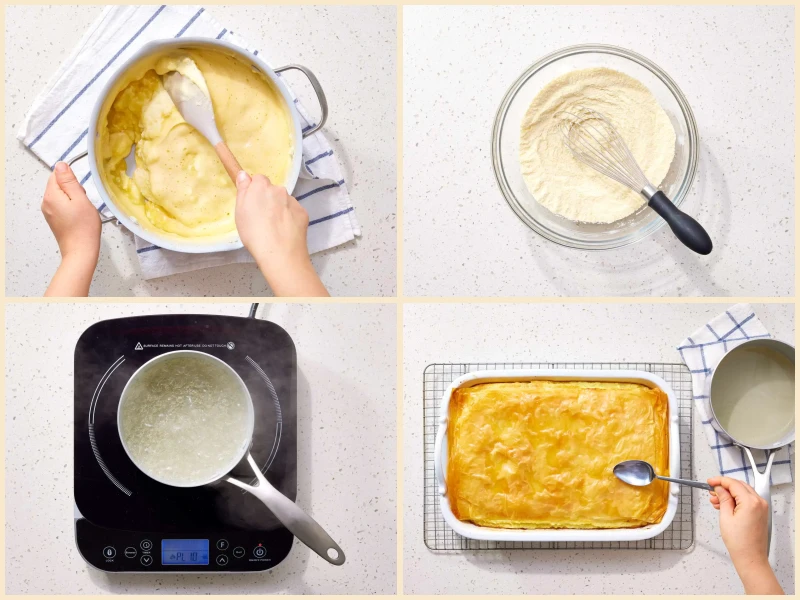
History of Galaktoboureko
Galaktoboureko, a cherished Greek dessert, has its roots in the rich culinary traditions of the Eastern Mediterranean. It is a fusion of Byzantine and Ottoman influences, merging the sweet and delicate custard filling with the flaky, buttery layers of phyllo dough. The desserts name, which translates to milk pie, hints at its creamy custard core, traditionally made from milk, semolina, sugar, and eggs. Although Galaktoboureko is often linked to Greece, variations of this treat are also found in Turkey and the broader Balkans. Over the centuries, this dessert has evolved, becoming a symbol of Greek hospitality and culinary excellence.
Regional Variations
Galaktoboureko is beloved across Greece, with some regional differences in preparation. In northern Greece, particularly in regions like Thessaloniki, the custard is often flavored with vanilla or citrus zest, adding an aromatic complexity. Meanwhile, in the Cycladic islands, a lighter, more delicate phyllo dough may be used, producing an even crispier texture. Some variations include a splash of orange blossom water or rosewater in the syrup, giving the dessert a distinctive floral note. While the basic concept of a custard-filled phyllo pie remains constant, local tweaks and flavorings ensure that each regions version of Galaktoboureko is unique.
How It Differs From Similar Dishes
Galaktoboureko stands out among other Greek desserts due to its combination of a rich custard filling and crispy, buttered phyllo pastry. Unlike Baklava, which is characterized by its nutty filling and honey syrup, Galaktoboureko has a smooth custard center and is soaked in a sugar syrup after baking, which gives it a unique texture and sweetness. While both desserts share the use of phyllo dough, Galaktobourekos custard filling places it in a different category, making it a more delicate, custard-based dessert compared to the crunchy, nutty Baklava.
Where It Is Typically Served
Galaktoboureko is a dessert often served at special occasions in Greece, including family gatherings, religious holidays, and celebrations like weddings and christenings. It is also a common sight in Greek bakeries, where locals and tourists alike enjoy it as a treat with a cup of Greek coffee or a glass of raki. While its an integral part of Greek cuisine, its popularity has spread beyond Greeces borders, with many Greek restaurants around the world offering this delicious pastry to international audiences.
Fun Facts About Galaktoboureko
1. The desserts popularity skyrocketed in the 19th century after the introduction of phyllo dough to Greek kitchens, replacing earlier homemade dough recipes.
2. One of the key tricks to making perfect Galaktoboureko is ensuring that the phyllo sheets are properly buttered and layered. The resulting texture is a balance of crispy crust and smooth custard.
3. Despite its simplicity, Galaktoboureko can be quite tricky to make at home due to the delicate balance between custard thickness and phyllo crispiness. However, the effort is well worth the delicious results!
4. Its traditionally served at room temperature, which allows the syrup to fully soak into the phyllo dough, enhancing the desserts flavor and texture.
5. In some regions, a twist on the classic recipe involves adding a bit of mastic (a resin from the mastic tree), which imparts a distinct, aromatic flavor to the dessert, reminiscent of pine or oregano.
FAQ about Galaktoboureko Recipe
Comments
Christine Hall
04/20/2024 07:46:03 PM
I prepared a large Greek dinner and was looking for a dessert other than Baklava, so I decided to give this recipe a try. It turned out to be fantastic, and I highly recommend it. I made a half batch in an 8x8 pan, and it came out wonderfully. Thank you, GapGirl, for the amazing recipe!
Adam Baker
03/23/2025 04:35:41 PM
This galactobourecko recipe is truly exceptional and has become my favorite. I have tried out several variations, but this one stands out. The end product is a heavenly custard filling that resembles a fluffy soufflé. The key is to diligently whip the eggs and sugar for the full 10 minutes as instructed, and trust me, the effort is absolutely worth it. I like to enhance the flavor by incorporating rose water into the simple syrup, which I then delicately pour over each individual slice on the serving dish. One important note is that this recipe likely originates from a time when milk was unpasteurized, hence the initial step of boiling the milk. Attempting to blend semolina and cornstarch into hot milk can lead to a clumpy disaster. I have found success by starting the custard similar to modern methods – by combining semolina, cornstarch, sugar, and salt in the pan, whisking them together, then gradually incorporating the cold milk while whisking continuously until it reaches a boil. In the end, this recipe has proven to be the ultimate galactobourecko in my repertoire.
Emma Davis
04/09/2025 05:52:03 AM
I used to work at a Greek family-owned restaurant where the owner would frequently make this dish. The only unique touch she added was orange juice and zest to the syrup. It was absolutely delightful! I'm curious, is adding orange a traditional method, or was it her own creative twist?
Robert Williams
08/31/2024 12:39:33 AM
I tried out the recipe and decided to enhance the syrup by adding a cinnamon stick and some orange peel. The resulting dessert was absolutely delicious!
Joshua Brown
12/29/2022 03:09:30 PM
Great service, highly recommend!
Samantha Rodriguez
12/30/2024 12:54:01 AM
I graduated from the CIA in 1984 and I must say, this recipe is fantastic. For those who enjoy a thicker crust, I recommend using 9 sheets of Phyllo on both the top and bottom.
Paul Martin
09/26/2024 09:11:32 AM
I tried this dessert at a nearby Greek restaurant and absolutely adored it, so I decided to give making it a shot. This recipe surpassed my expectations and received rave reviews from everyone who tasted it.


